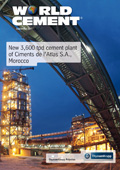Editorial comment
Back in July, London hosted a day of festivities to mark one year until the opening ceremony of the 2012 Olympic Games. As well as unveiling the design of the winner’s medals, the event was an opportunity for the London Organising Committee to demonstrate its preparedness for the Games. Such is the confidence in the city’s venues that London Mayor Boris Johnson brazenly announced: “We might as well call a snap Olympics tomorrow and catch the rest of the world napping”. Of course, the deplorable events that unfolded across England less than two weeks later quickly woke the rest of the world up! As London recovers from its worst riots in years, questions have been raised about the city’s ability to deliver a safe and secure Games.
Register for free »
Get started now for absolutely FREE, no credit card required.
Another country facing intensifying scrutiny as it prepares for its presence in the world’s sporting spotlight is Brazil. However, local security is not the country’s main concern (although a concern it certainly remains). In contrast to England, the biggest hurdle facing Brazilian preparations for both the 2014 FIFA World Cup and 2016 Rio Olympic Games is infrastructure. The dire state of the country’s airports is a particular worry, with most already operating above normal capacity and the Institute for Applied Economic Research confirming that only two of 13 air terminals are currently on schedule to finish their expansion work before the start of the World Cup. Plans to build a high-speed railway between São Paulo and Rio de Janeiro are also in doubt, with bids solicited for the project on three different occasions with no success.
Meanwhile, stadium work is also dragging - many are behind schedule and over budget, including Rio’s Maracanã stadium, which is expected to host the World Cup final, and Corinthians’ new Itaquerão stadium in São Paulo.
As Brazil races to be ready for these important international events, its cement industry is flourishing. However, as Renato Giusti, President of the Associação Brasileira de Cimento Portland (ABCP), has said: “We’re not building Brazil because of the World Cup or the Olympics […] These projects fell in the middle of the path. We want a [better] Brazil for Brazilians”.
In line with its booming economy and increasing population, the Brazilian government has allocated significant funds for infrastructure programmes, including its national Growth Acceleration Plan (PAC2) and the ‘Minha Casa Minha Vida’ National Housing Programme (see ‘Global Construction 2020’, p. 53, for more details). All this has contributed to a projected growth in cement production capacity to over 100 million t by 2015. And although we cannot expect domestic demand to be sustained at current levels once these mega projects have been completed, continued improvements to Brazil’s relatively poor infrastructure should ensure that its cement industry continues to burn bright after the Olympic flame has been extinguished in 2016.
In the spirit of looking to the future, WORLD CEMENT’s 2012 Media Information, including editorial schedule, is now available to download at www.worldcement.com. As always, we invite you to get in touch with any ideas for feature articles for the year ahead.


